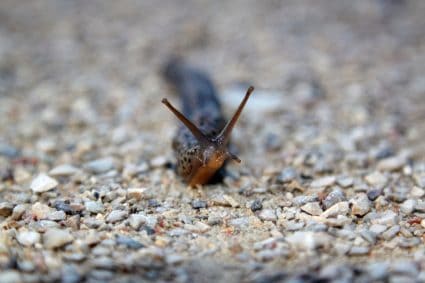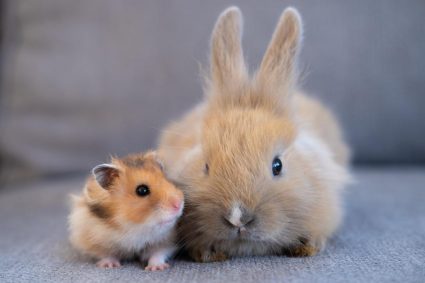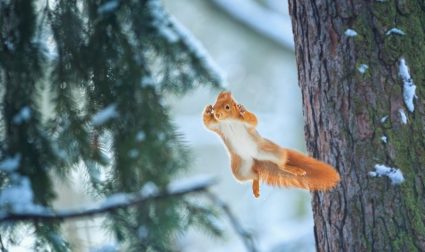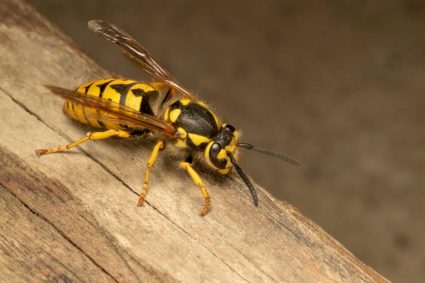
Coyotes are fascinating creatures, known for their adaptability and resilience. One of the key ways to understand and track these animals is by studying their tracks. But how big are coyote tracks? What characteristics distinguish them from other animals’ tracks? And how can you correctly identify and measure them? Let’s dive in.
The size of coyote tracks typically varies with the front paw print measuring approximately 2.5 inches long by 2 inches wide, and the back paw print being slightly smaller, about 2.25 inches long by 1.75 inches wide. However, the size can differ based on factors such as the substrate and the coyote’s individual gait.
Size of Coyote Tracks
On average, the front paw print of a coyote measures approximately 2.5 inches long by 2 inches wide. The back paw print is slightly smaller, measuring about 2.25 inches long by 1.75 inches wide. However, the size of coyote tracks can vary due to factors such as the substrate (e.g., mud, snow, or sand) and the individual’s gait.
Distinguishing Characteristics of Coyote Tracks
Coyote tracks have several distinct characteristics that can help you distinguish them from other animals’ tracks:
- Shape and Size: Coyote tracks are oval-shaped and have four toes with claws in both front and hind feet.
- Symmetry: Coyote tracks are relatively symmetrical, with a slight lead toe/claw that allows left and right feet to be differentiated.
- Foot Pad: The foot pad of a coyote is roughly triangular-shaped. The hind foot is slightly smaller than the front foot and registers a smaller foot pad.
- Negative Space: An X-shape can be drawn in the negative space between the toes and pad of coyote tracks.
- Gait and Stride: Coyotes typically walk or run in straight lines, with each paw print almost directly in front of the next.
How Coyote Tracks Differ from Other Species
While coyote tracks can sometimes be mistaken for the tracks of other animals, there are a few key differences to note:
- Domestic Dogs: Dog tracks are often rounder and larger than coyote tracks. They also tend to have thicker, blunter claws and less space between the toes and pad.
- Foxes: Fox tracks are smaller (1.5 inches wide and 2 inches long) and daintier than coyote tracks.
- Wolves: Wolf tracks are much larger than coyote tracks, measuring about 5 inches long by 4 inches wide.
Tips for Correctly Identifying and Measuring Coyote Tracks
When identifying and measuring coyote tracks, it’s important to consider the following tips:
- Use a Ruler or Tape Measure: To ensure accuracy, use a ruler or tape measure to record the length, width, stride, and trail width of the tracks.
- Take Photographs: Photographs can serve as a helpful reference for future comparison.
- Consider Multiple Characteristics: Don’t rely on one characteristic alone to identify a track. Instead, consider multiple characteristics, such as shape, size, symmetry, foot pad, and negative space.
By understanding the size and distinguishing characteristics of coyote tracks, you can gain a deeper appreciation for these remarkable creatures and their behaviors. Remember, tracking is both a science and an art, requiring patience, practice, and a keen eye for detail. Happy tracking!
Frequently Asked Questions
What other factors can affect the size of coyote tracks?
Factors such as age and health of the coyote, the terrain, and the weather can affect the size of the tracks. Younger coyotes will have smaller tracks, while an injured coyote may leave irregular prints. Soft terrain like snow or mud can make the tracks appear larger.
Can I differentiate male and female coyote tracks?
It’s difficult to differentiate between male and female coyote tracks based on size alone as there is a lot of overlap. However, males tend to have slightly larger tracks on average.
How are coyote tracks different from bobcat or lynx tracks?
Bobcat and lynx tracks are quite different from coyote tracks. Both bobcats and lynxes have retractable claws, so their tracks usually don’t show claw marks. Their tracks are also rounder and show a distinct “M” shape in the negative space.
Why do coyotes walk or run in straight lines?
Coyotes, like many other wild animals, walk or run in straight lines to conserve energy. This efficient movement pattern also helps them move quickly through their environment.
What time of day are coyote tracks most likely to be seen?
Coyotes are most active during dawn and dusk, so that’s when you’re most likely to find fresh tracks. However, they can also be active at night, especially in urban areas where they’ve adapted to human activity.











